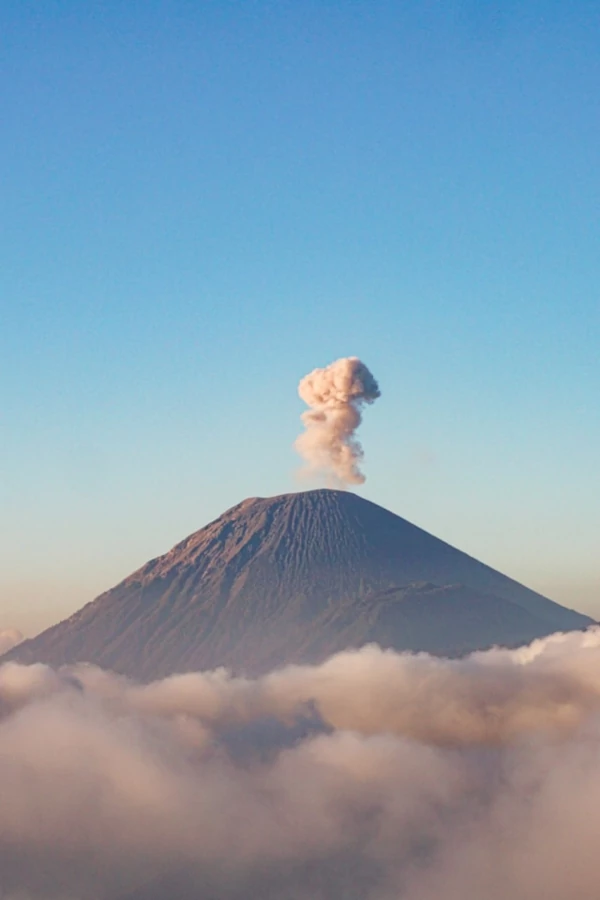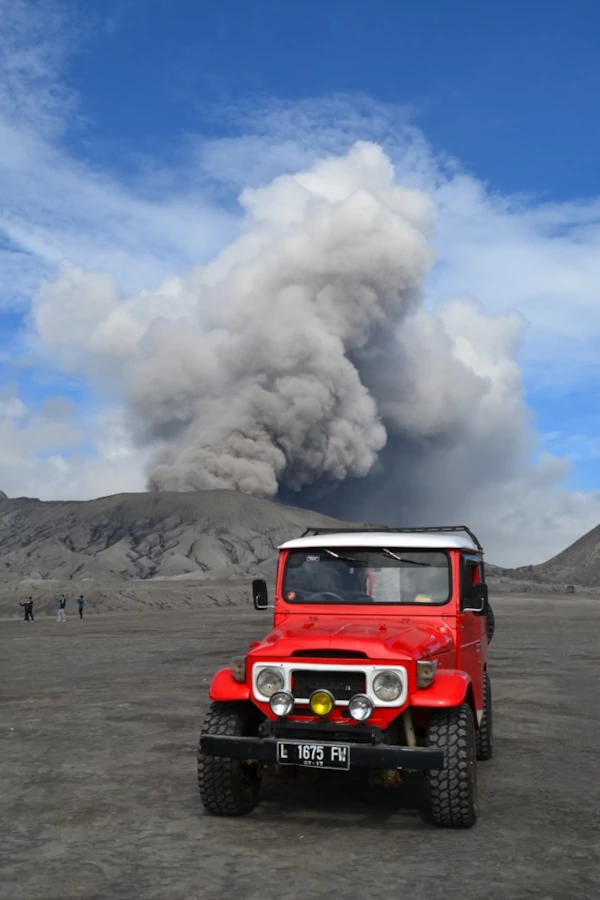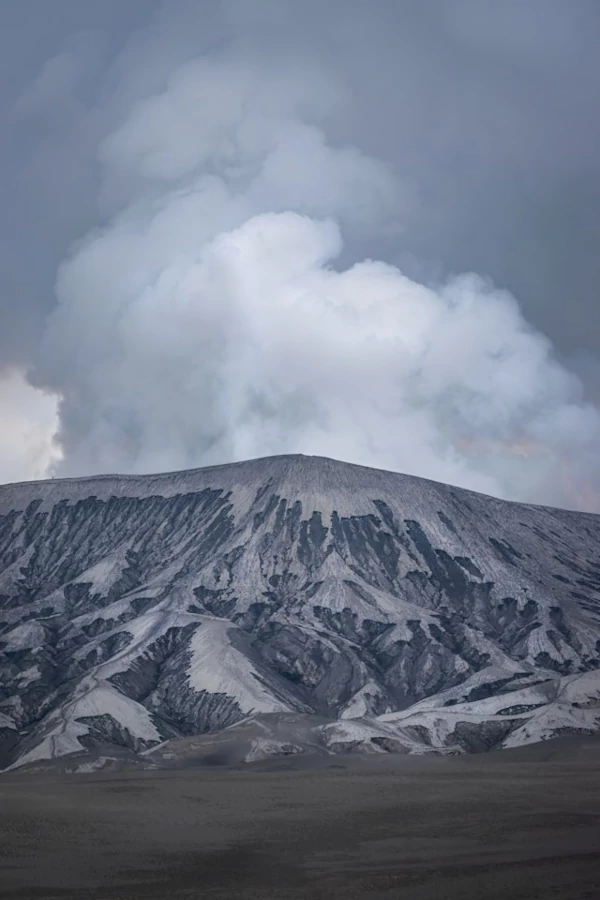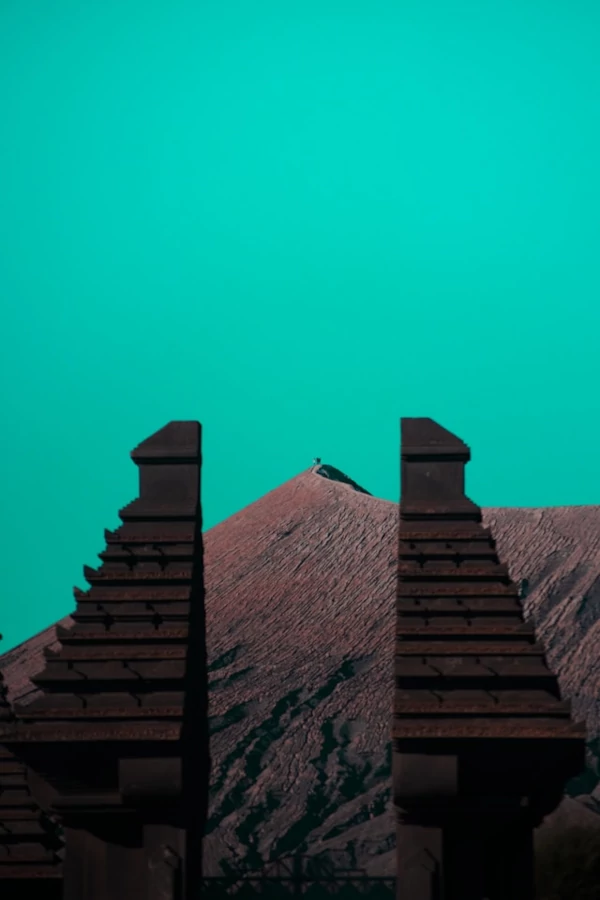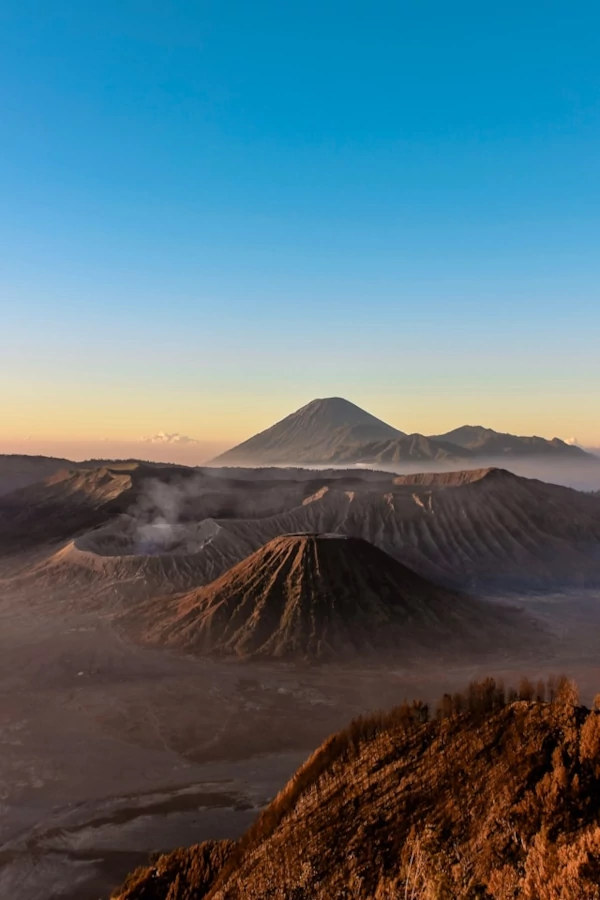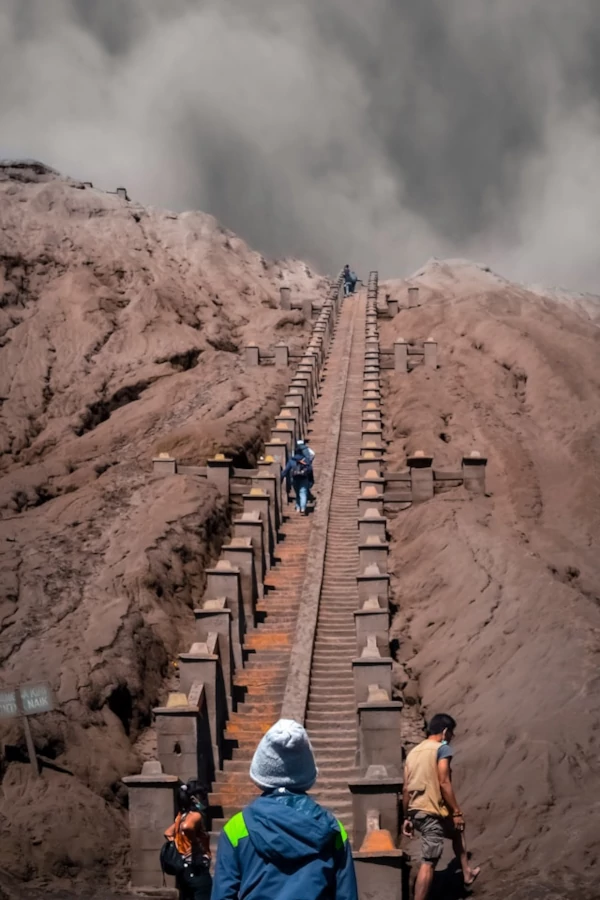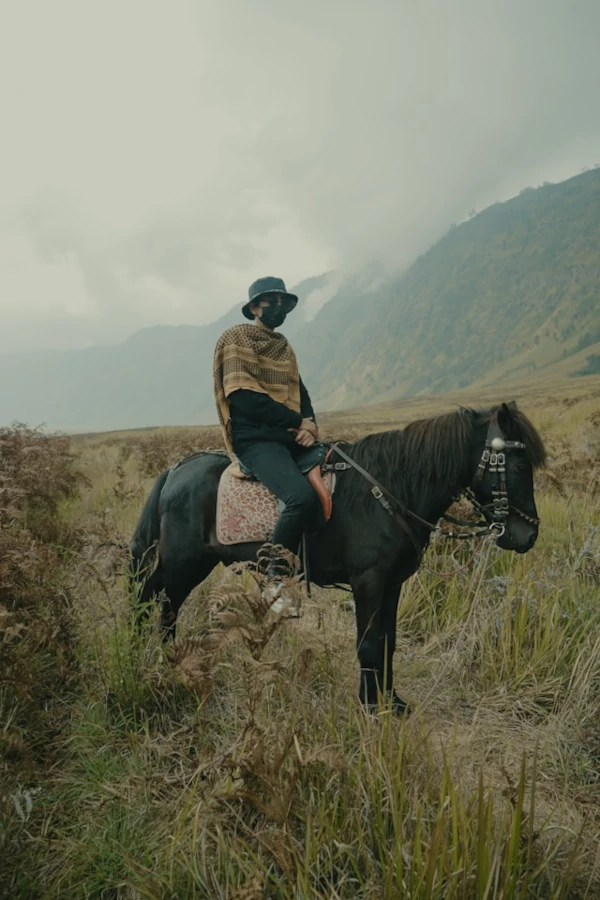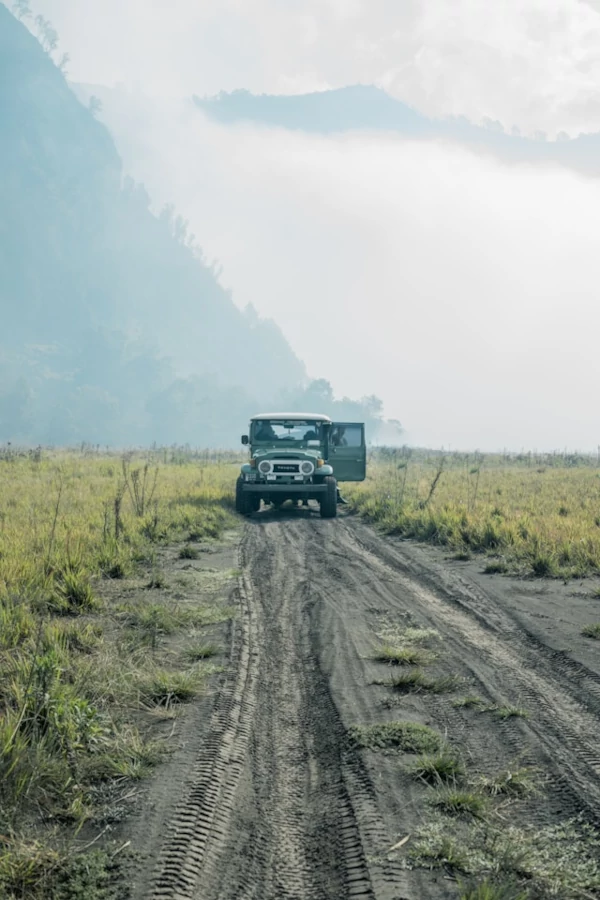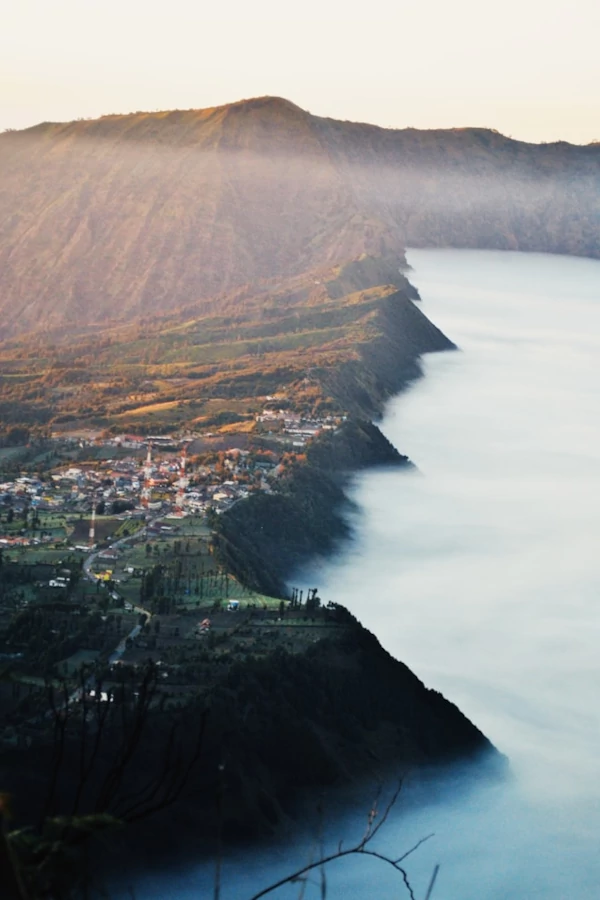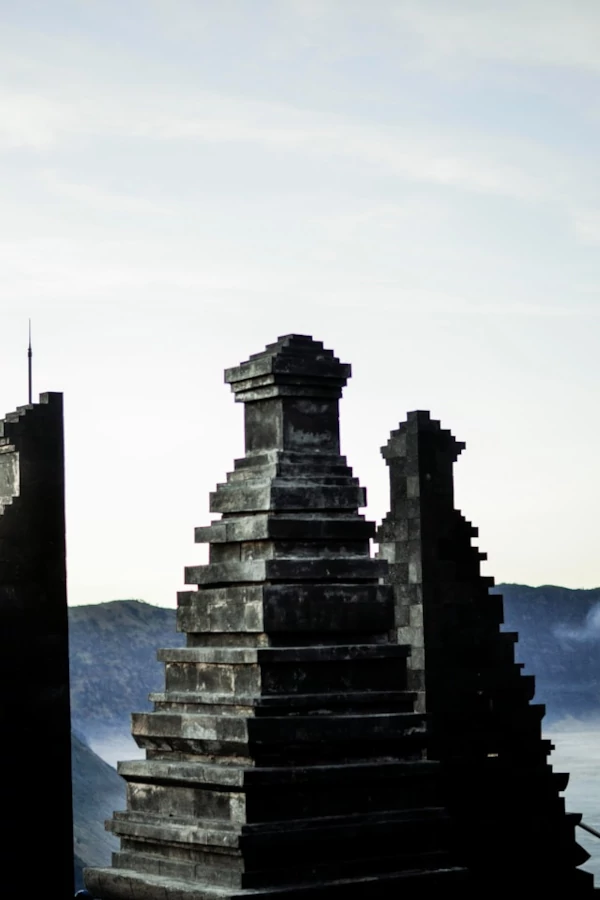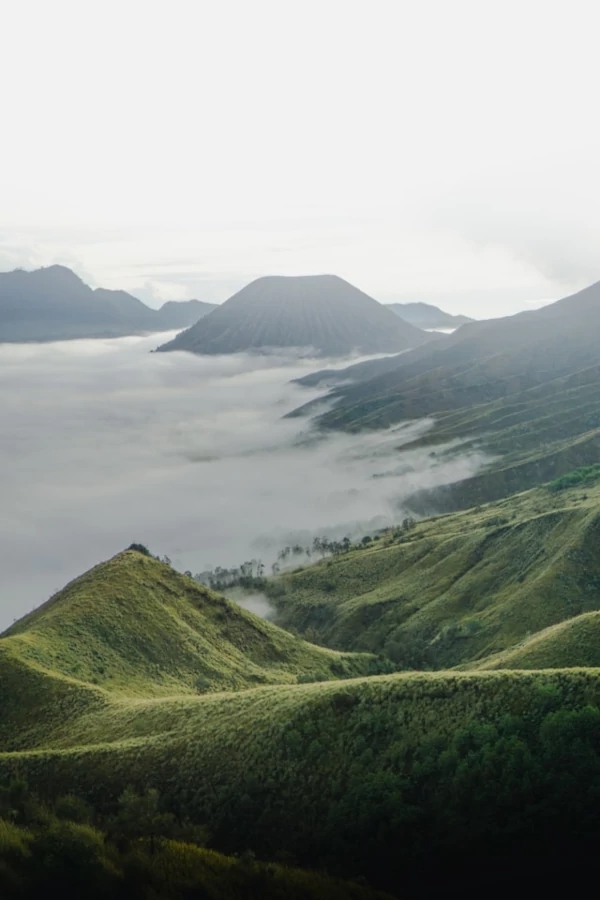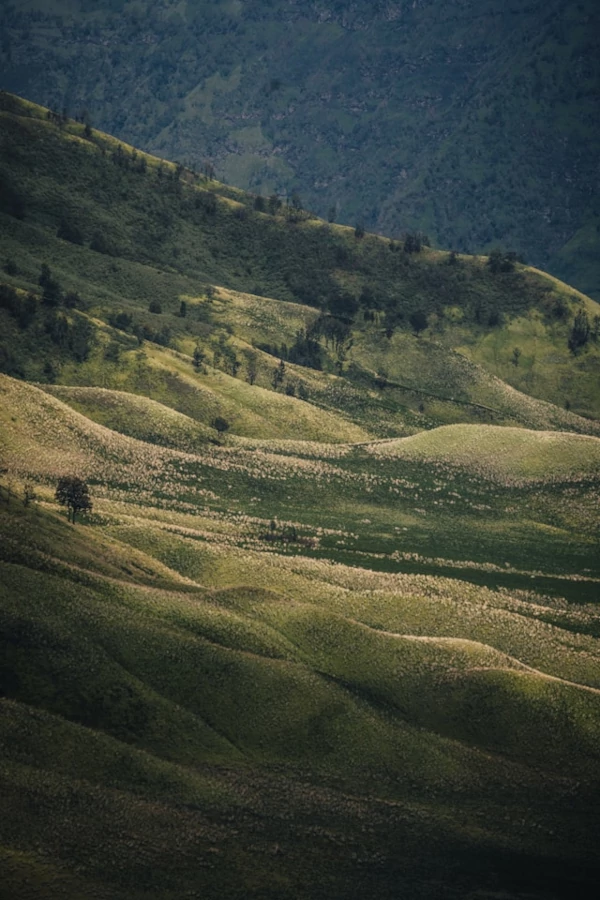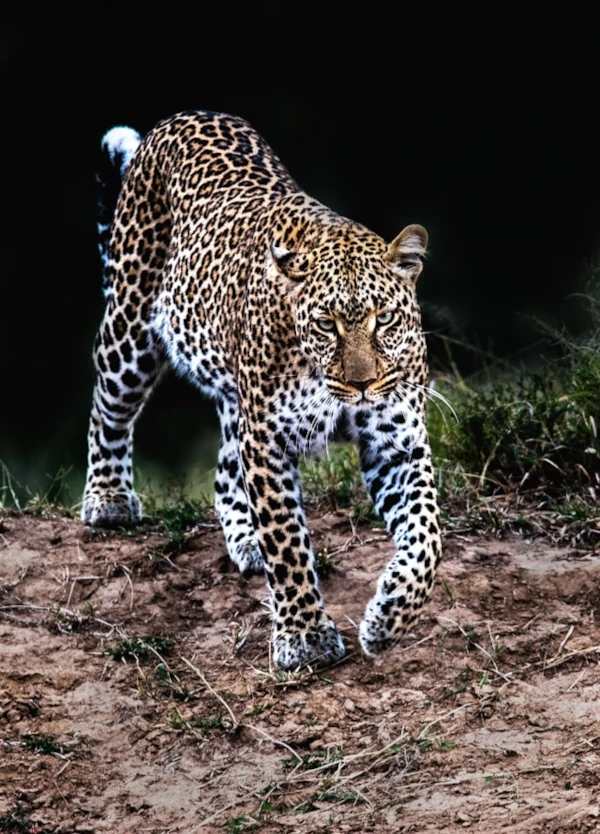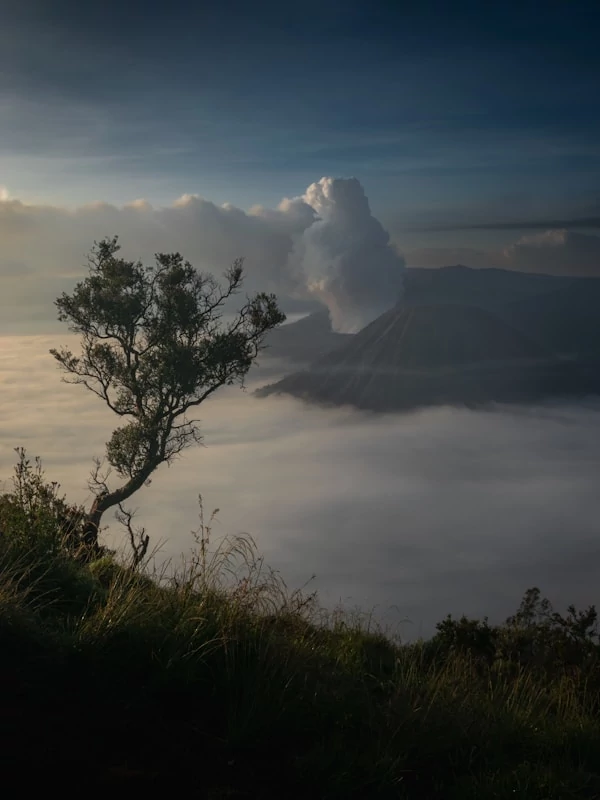The Tengger Caldera, a vast volcanic crater, adds to the park's otherworldly scenery. Visitors can explore the rugged terrain, hike to the craters, and witness the unique culture of the Tenggerese people who inhabit the region. With its blend of natural beauty and cultural richness, Bromo Tengger Semeru National Park is a must-visit destination for adventurers and nature lovers alike.
Explore the Wonders of Bromo Tengger Semeru National Park
Volcanic Landscapes and Geology of Bromo Tengger Semeru National Park
Bromo Tengger Semeru National Park in East Java, Indonesia, is a natural wonder shaped by powerful volcanic forces over thousands of years. The park is home to one of the most breathtaking and unique volcanic landscapes in the world, dominated by towering peaks, vast calderas, and the dramatic interplay of geological formations. This rich volcanic heritage makes the park a must-visit for geologists, adventurers, and nature lovers alike.
Mount Bromo: The Iconic Volcano
At the heart of the park lies Mount Bromo, one of Indonesia’s most famous and active volcanoes. Rising to 2,329 meters above sea level, it is not the tallest peak in the park, but it is undeniably the most iconic. The volcano is located within the massive Tengger Caldera, an ancient volcanic basin with a diameter of about 10 kilometers, surrounded by rugged ridges and dramatic cliffs.
Mount Bromo is continuously active, with white smoke billowing from its crater, creating an ethereal and almost otherworldly atmosphere. The crater can be accessed via a short hike, offering visitors an up-close view of its steaming mouth and sulfurous fumes. Standing on the rim of Mount Bromo and witnessing the stark contrast between the grey volcanic sand and the lush surrounding landscape is a truly unforgettable experience.
Mount Semeru: The Highest Peak in Java
Towering over the landscape is Mount Semeru, also known as Mahameru, the highest mountain in Java at 3,676 meters. Mount Semeru is a stratovolcano, known for its near-constant state of eruption, spewing ash and smoke into the sky every 20 minutes. This active volcano is considered one of the most awe-inspiring natural features of the park, symbolizing the raw power of the earth’s tectonic activity.
The trek to the summit of Mount Semeru is a challenging but rewarding adventure, drawing seasoned hikers and thrill-seekers from around the world. The journey takes trekkers through dense forests, across volcanic plains, and up the steep slopes of the volcano, culminating in panoramic views of the surrounding landscapes at the peak. On clear mornings, hikers are treated to an incredible sight: the sun rising over a sea of clouds, with Mount Bromo and the Tengger Caldera in the distance.
The Tengger Caldera: A Vast Volcanic Crater
The Tengger Caldera, a massive depression formed by ancient volcanic activity, is one of the park’s most striking features. Spanning approximately 10 kilometers in diameter, the caldera is an expansive desert-like area, often referred to as the "Sea of Sand" or "Laut Pasir". The caldera’s sandy, ash-covered floor provides a surreal, moon-like landscape that contrasts starkly with the lush green mountains surrounding it.
Geologically, the caldera was formed by a massive eruption that caused the collapse of a prehistoric volcano. Over time, smaller volcanoes, including Mount Bromo, emerged within the caldera. This unique geological formation is one of the largest volcanic calderas in Southeast Asia and continues to attract researchers interested in the dynamic processes of volcanism.
The Formation of Bromo Tengger Semeru National Park
The formation of Bromo Tengger Semeru National Park is the result of millions of years of tectonic activity. The park sits on the Pacific Ring of Fire, a region known for its intense volcanic and seismic activity. The subduction of the Indo-Australian Plate beneath the Eurasian Plate has given rise to the park's impressive volcanic peaks, deep calderas, and fertile volcanic plains.
The region has experienced multiple volcanic eruptions over the centuries, which have not only shaped the physical landscape but also enriched the soil, supporting a diverse range of plant and animal life. The constant renewal of the land through volcanic activity is what makes this region so geologically significant and environmentally unique.
Volcanic Plains and Lava Fields
Beyond the iconic peaks of Mount Bromo and Mount Semeru, Bromo Tengger Semeru National Park is also characterized by vast lava fields and volcanic plains. These barren, rocky landscapes are the remnants of past eruptions, where lava flows have cooled and solidified into rugged formations. The park’s volcanic plains are a stark reminder of the destructive power of eruptions, but they also serve as a source of fascination for visitors and researchers alike.
The sand sea within the Tengger Caldera is another prominent geological feature. This fine volcanic ash, constantly shifting with the wind, creates a dynamic environment that appears to change shape and texture depending on the weather and light. The contrast between the barren plains and the fertile highlands surrounding the caldera is one of the park’s most captivating sights.
Geothermal Activity and Future Eruptions
As a highly active volcanic region, Bromo Tengger Semeru National Park is closely monitored for seismic and geothermal activity. The continuous eruptions of Mount Semeru and the regular emissions from Mount Bromo are indicators of the ongoing tectonic movements beneath the earth’s surface. While the region’s volcanic activity has the potential for future eruptions, the park remains a popular destination due to its accessibility and relatively low risk.
Visitors are often reminded to respect the power of these natural formations, and local authorities provide regular updates on volcanic activity to ensure the safety of all who explore the park.
The Influence of Volcanism on Local Culture
The volcanic landscapes of Bromo Tengger Semeru National Park are not just geological wonders; they also hold deep cultural significance for the local Tenggerese people. The Tenggerese believe that the volcanic mountains are sacred, and they have built their lives and traditions around them. The annual Yadnya Kasada festival, during which offerings are thrown into the crater of Mount Bromo, is a powerful testament to the enduring connection between the local community and the land shaped by volcanism.
Conclusion
Bromo Tengger Semeru National Park’s volcanic landscapes and geology are a testament to the dynamic forces of nature that have shaped East Java’s terrain for millions of years. From the iconic Mount Bromo and towering Mount Semeru to the expansive Tengger Caldera and volcanic plains, the park offers visitors an unparalleled glimpse into the power and beauty of Earth's geological processes. For those seeking a deeper understanding of volcanism or simply in search of awe-inspiring landscapes, Bromo Tengger Semeru National Park is a destination like no other.
Activities at Bromo Tengger Semeru National Park
Bromo Tengger Semeru National Park, is a treasure trove of exciting activities, offering both adventurous and cultural experiences in one of the most dramatic volcanic landscapes in the world. From sunrise treks to exploring ancient traditions, visitors can engage in a wide variety of activities that showcase the natural beauty, cultural heritage, and exhilarating outdoor experiences this unique park has to offer.
Adventure Activities
The park is a haven for adventure seekers, providing opportunities for trekking, hiking, horseback riding, and even off-road excursions through volcanic plains. Whether you’re looking for a leisurely hike or a challenging climb, the park offers something for every level of adventurer.
Mount Bromo Sunrise Trek
One of the most iconic experiences at Bromo Tengger Semeru National Park is witnessing the sunrise over Mount Bromo. Every morning, visitors gather at Mount Penanjakan (2,770 meters), the highest viewpoint, to witness the golden sun rise above the Tengger Caldera, illuminating the mist-covered landscape below. The view reveals the smoking crater of Mount Bromo, the towering silhouette of Mount Semeru in the distance, and the sea of sand stretching out between them.
How to Do It: The trek to the sunrise viewpoint can be done on foot or by hiring a jeep to take you to the top. The ascent usually starts in the early morning hours, around 3 or 4 AM, allowing enough time to reach the summit before dawn.
Duration: The hike is relatively short but steep, taking about an hour. Jeep rides take around 45 minutes to reach the viewpoint.
Hiking Mount Semeru
For serious adventurers, climbing Mount Semeru—the highest peak in Java at 3,676 meters—is an unforgettable challenge. Known for its regular eruptions, which occur every 20 minutes, Mount Semeru offers an intense but rewarding trekking experience.
Trail Difficulty: The trek to the summit of Mount Semeru is strenuous, requiring good physical fitness and preparation. The journey typically takes two days, with an overnight stay at Ranu Kumbolo, a serene crater lake halfway up the mountain.
Summit Experience: The final ascent begins early in the morning, with climbers reaching the summit at dawn. From the top, hikers are rewarded with sweeping views of East Java, including Mount Bromo and the Tengger Caldera below.
Trekking to Bromo’s Crater
A more accessible but equally thrilling adventure is the trek to the crater of Mount Bromo itself. Visitors can walk or ride on horseback across the Sea of Sand, the vast volcanic plain that stretches out from the base of Mount Bromo, and then climb the 250-step staircase that leads to the crater’s edge. The sight of white smoke rising from the active crater is both awe-inspiring and humbling.
How to Get There: Visitors can trek across the sand sea on foot (about an hour's walk) or rent horses from the locals for a more traditional approach.
Crater View: Once you reach the top, the smoking crater offers a glimpse into the volcanic activity still shaping the landscape, with sulfur fumes rising from the depths.
Horseback Riding
For a unique and traditional experience, visitors can explore the park by horseback riding across the Laut Pasir (Sea of Sand). Local Tenggerese people offer horseback rides from the base of Mount Bromo to the foot of the staircase leading up to the crater, allowing visitors to experience the vast plains in a way that connects to the region's cultural roots.
Cultural Significance: Horseback riding is deeply rooted in Tenggerese tradition, and many visitors enjoy the experience of riding horses across the same paths the local community has used for generations.
Jeep Tours and Off-Roading
For those who prefer a more exhilarating and convenient way to explore the park, jeep tours are a popular option. Jeeps can be hired to take visitors to various points of interest, including the Penanjakan Sunrise Viewpoint, Mount Bromo’s crater, and several other stunning locations within the park.
Off-Road Adventure: Driving through the sandy plains and rocky terrain of the caldera in a jeep offers a fun and thrilling way to cover a lot of ground quickly while taking in the breathtaking scenery.
Cultural Activities
Bromo Tengger Semeru National Park is not only known for its natural beauty but also for its rich cultural heritage. The local Tenggerese people, who live in the villages surrounding the park, have preserved their ancient traditions, many of which are tied to the volcanic landscape. Cultural activities in the park offer visitors the chance to immerse themselves in local customs and spiritual practices.
Yadnya Kasada Festival
One of the most significant cultural events in the park is the Yadnya Kasada Festival, an annual ceremony held by the Tenggerese people to honor the volcanic gods of Mount Bromo. During this festival, locals throw offerings—such as food, livestock, and money—into the crater of Mount Bromo as a gesture of gratitude and to seek blessings from the gods.
When: The festival takes place during the 14th day of the Kasada month in the traditional Tenggerese calendar, typically falling between July and August.
Cultural Significance: The Yadnya Kasada ceremony is deeply spiritual for the Tenggerese, symbolizing their harmonious relationship with the volcano and its forces. Visitors can witness this extraordinary event and gain insight into the region’s spiritual traditions.
Exploring Tenggerese Villages
For a more in-depth cultural experience, visitors can explore the Tenggerese villages located around the national park. These communities have maintained their unique cultural identity over centuries, living in harmony with the volcanic environment. The Tenggerese practice a blend of Hinduism and animism, with rituals and festivals reflecting their connection to nature and the spiritual world.
Cultural Interaction: Walking through these villages allows visitors to learn about local customs, observe traditional farming methods, and interact with the friendly Tenggerese people, who are known for their warm hospitality.
Food and Crafts: Visitors can also try traditional Tenggerese food and purchase handmade crafts as souvenirs, supporting local artisans.
Tenggerese Temples and Shrines
Scattered throughout the park are several small temples and shrines that serve as spiritual hubs for the Tenggerese people. These sacred sites are integral to the region’s religious practices and offer a glimpse into the community’s spiritual life.
Luhur Poten Temple: One of the most prominent temples is the Luhur Poten Temple, located at the foot of Mount Bromo. It serves as the focal point for rituals during the Yadnya Kasada Festival and other religious events. Visitors can observe the architecture of the temple and learn about its significance in Tenggerese Hinduism.
Local Markets and Handicrafts
A visit to the local markets surrounding the park provides an opportunity to experience Tenggerese culture firsthand. The markets are vibrant, with stalls selling everything from fresh produce to local handicrafts. Visitors can purchase traditional items such as woven baskets, handmade textiles, and wood carvings, which make for meaningful souvenirs while supporting local artisans.
Nature and Wildlife Observation
While the park is most famous for its volcanic features, it also hosts a range of unique ecosystems and wildlife. Visitors can explore the forests, crater lakes, and plains that make up the diverse natural environment of the park.
Birdwatching: The park is home to several species of birds, some of which are endemic to Java. Birdwatchers can enjoy spotting rare species while trekking through the park’s diverse habitats.
Wildlife: In addition to birds, the park is home to various wildlife species, including the Javanese leopard, wild boar, and deer.
Conclusion
Bromo Tengger Semeru National Park offers an exciting array of activities for every type of traveler. Adventure seekers can trek to volcanic craters, scale Java's highest peak, or ride across sandy plains, while those seeking cultural immersion can participate in traditional festivals, explore Tenggerese villages, and experience local customs. Whether you’re drawn by the dramatic volcanic landscapes or the rich cultural heritage, the park promises an unforgettable experience filled with both thrilling adventures and meaningful cultural insights.
Flora, Fauna, and Biodiversity at Bromo Tengger Semeru National Park
Bromo Tengger Semeru National Park, is a unique biodiversity hotspot, home to a variety of ecosystems shaped by its volcanic landscape. The park's diverse habitats, ranging from volcanic plains and calderas to highland forests and alpine meadows, create an environment where a remarkable array of flora and fauna thrives. The presence of both tropical and subalpine zones makes it a fascinating destination for botanists, wildlife enthusiasts, and nature lovers seeking to explore the rich biodiversity of Indonesia.
Flora of Bromo Tengger Semeru National Park
The park's vegetation varies dramatically based on altitude and the unique volcanic soil composition. Due to the volcanic activity, much of the land is constantly reshaped, which has led to a variety of plant life that is resilient and well-adapted to harsh conditions.
Highland Tropical Forests
The lower elevations of the park are covered in dense highland tropical forests, which are lush and verdant due to the nutrient-rich volcanic soil. These forests feature a variety of plant species, including tall tropical trees, climbing vines, and thick undergrowth.
Subalpine Zone Vegetation
As visitors ascend Mount Semeru, they enter the subalpine zone, where the vegetation becomes sparser and more adapted to cooler temperatures and harsher conditions. Here, trees are shorter and more widely spaced, with open grasslands and shrubs filling the gaps.
Volcanic Plains and Sea of Sand
The Sea of Sand, or Laut Pasir, within the Tengger Caldera is an otherworldly, barren landscape dominated by volcanic ash and sand. Very few plants can survive here due to the lack of nutrients and frequent disturbances from volcanic activity. However, some hardy species have adapted to this environment.
Fauna of Bromo Tengger Semeru National Park
Bromo Tengger Semeru National Park also supports a variety of wildlife species, with mammals, birds, reptiles, and insects inhabiting its diverse ecosystems. Although some animals have become elusive due to human activity, many species still thrive in the park’s remote areas.
Mammals
The park’s forests and grasslands are home to several mammals, some of which are endemic to Java. While many animals are nocturnal and difficult to spot, patient visitors might catch a glimpse of deer, wild boar and even the javanese leopard!
Birds
Bromo Tengger Semeru National Park is a haven for birdwatchers, with a diverse bird population including several endemic and migratory species. The park's varied habitats provide nesting and feeding grounds for a range of bird species.
Reptiles and Amphibians
Although less visible than the park’s mammals and birds, several species of reptiles and amphibians inhabit the forests and grasslands, contributing to the biodiversity of Bromo Tengger Semeru National Park.
Biodiversity Hotspot and Conservation Efforts
Bromo Tengger Semeru National Park is a biodiversity hotspot that represents Java’s unique ecosystems and endemic species. However, conservation of these species is critical, as habitat loss and volcanic activity pose challenges for local flora and fauna.
Conservation of Endangered Species
The Javan Hawk-Eagle and Javan Leopard are both endangered species found within the park. These animals face threats from habitat loss and poaching, and efforts are underway to protect them through monitoring and habitat preservation. The Indonesian government and conservation organizations collaborate to prevent illegal hunting and raise awareness about the importance of these species.
Ecotourism and Community Involvement
Ecotourism initiatives encourage responsible tourism within the park, promoting respect for local ecosystems and minimizing environmental impact. Local communities are actively involved in conservation efforts, providing eco-friendly tours, managing waste, and participating in reforestation projects. These efforts contribute to preserving the park’s biodiversity while supporting sustainable livelihoods for residents.
Bromo Tengger Semeru National Park is a captivating destination not only for its dramatic volcanic landscapes but also for its incredible biodiversity. From the lush highland forests filled with casuarina trees and orchids to the volcanic plains of the Tengger Caldera, the park is home to a wide variety of flora that has adapted to life in a volcanic landscape. The fauna, including endangered species like the Javan Hawk-Eagle and Javan Leopard, adds to the park’s ecological richness, showcasing the delicate balance between nature and the dynamic forces of volcanism. Conservation efforts within the park are critical to protecting this unique ecosystem, ensuring that future generations can experience the incredible biodiversity of Bromo Tengger Semeru National Park.
Visitor tips
Best time to visit
The best time to visit Bromo Tengger Semeru National Park is during the dry season, from May to September, with clear skies, stable weather, and minimal rainfall, making it the best time for sunrise hikes and stunning views of the volcanoes.
Plan for Early Mornings
The most popular activity in the park is the sunrise trek to Mount Bromo, which requires an early start. Most visitors begin their journey around 3:00 AM to reach the sunrise viewpoint in time.
- Tip: Arrange transportation, accommodation, and any necessary guides in advance to make the early morning easier. Booking a jeep tour the day before can save time and ensure a seamless start.
Dress in Layers
The temperatures at Bromo Tengger Semeru National Park can vary widely depending on the time of day and altitude. Early mornings can be cold, and temperatures can go down as far as 5°C, especially at high altitudes, but the weather warms up significantly as the sun rises.
- Tip: Dress in layers to stay comfortable. Bring a warm jacket, hat, gloves, and scarf for the cold, and wear lighter layers underneath that you can remove as the day warms up. A windproof jacket is especially helpful due to the exposed areas on the mountain.
Prepare for Rough Terrain
The terrain at the park varies, from rocky volcanic plains to steep, sandy slopes, especially near Mount Bromo’s crater and on the path to Mount Semeru.
- Tip: Wear sturdy hiking boots or shoes with good grip for better footing on uneven surfaces. Sandals and flip-flops are not recommended for hikes and can make navigating the terrain more difficult.
Be Aware of Altitude and Fitness Levels
Climbing Mount Semeru is a challenging trek that takes two days and is suited to experienced hikers. The trek to Mount Bromo’s crater is shorter and less strenuous, but still requires some physical stamina.
- Tip: Evaluate your fitness level and plan hikes that suit your experience. Beginners should avoid climbing Mount Semeru but can still enjoy easier hikes and jeep tours around Mount Bromo and the Tengger Caldera.
Pack Essentials for the Journey
Whether you’re trekking to Mount Bromo or climbing Mount Semeru, certain items will enhance your comfort and safety.
- Essentials: Bring a flashlight or headlamp for pre-dawn hikes, a sufficient water supply, high-energy snacks, sunscreen, a hat, and sunglasses. Since there are limited facilities on the trails, carry tissues, hand sanitizer, and any personal essentials you may need.
Respect Local Customs and Sacred Sites
Bromo Tengger Semeru National Park is a sacred place for the Tenggerese people. They have deep spiritual connections to Mount Bromo and perform rituals, such as the Yadnya Kasada Festival, in the area.
- Tip: Show respect by not disturbing any shrines or offerings left at the crater. Refrain from loud or disruptive behavior and follow guidelines given by local guides or signage in the area.
Understand Volcanic Risks
The park is an active volcanic area, with Mount Bromo and Mount Semeru both erupting periodically. Check for any park alerts or restricted areas, as volcanic activity can occasionally lead to temporary closures or restricted access.
- Tip: Listen to the advice of local authorities and guides. If visiting during an active period, keep a safe distance from the crater and observe all posted warnings.
Consider Hiring a Guide or Joining a Tour
The landscapes of Bromo Tengger Semeru can be challenging to navigate, and a knowledgeable guide can help visitors understand the geology, culture, and history of the area.
- Tip: Hiring a local guide or joining a jeep tour not only enhances safety but also enriches the experience with cultural insights and access to lesser-known spots in the park.
Practice Responsible Tourism
Bromo Tengger Semeru National Park’s fragile ecosystems and cultural heritage require preservation efforts. Visitors can contribute by following sustainable travel practices.
- Tip: Carry out all trash and avoid leaving any waste. Use refillable water bottles, stick to marked trails to minimize environmental impact, and support local vendors for a positive tourism footprint.
Prepare for Minimal Facilities
Facilities within the park are limited, especially around Mount Bromo and on hiking trails. Toilets and snack stalls are available at certain points, but they can be basic.
- Tip: Bring any essential items you may need, such as hand sanitizer, tissue paper, and snacks. Cash is also useful as some areas do not accept cards, especially for small purchases like snacks or souvenirs.
Book Accommodations in Advance
Accommodation near Bromo Tengger Semeru National Park is in high demand, especially during the peak season (May to August) and during the Yadnya Kasada Festival.
- Tip: Book your hotel or guesthouse in advance, especially if planning to visit during these busy periods. Probolinggo, Malang, and Cemoro Lawang are popular places to stay with easy access to the park.
Take Caution with Local Wildlife
Although encounters are rare, the park is home to wildlife, including wild boars and monkeys, which may occasionally approach humans.
- Tip: Avoid feeding wildlife, as this can be harmful to both animals and visitors. Keep food securely packed and maintain a safe distance from any animals you may encounter.
Visiting Bromo Tengger Semeru National Park is a rewarding experience, offering stunning landscapes and cultural immersion. With careful preparation and respect for the local environment and community, visitors can enjoy a safe and unforgettable adventure in one of Indonesia’s most remarkable national parks.









